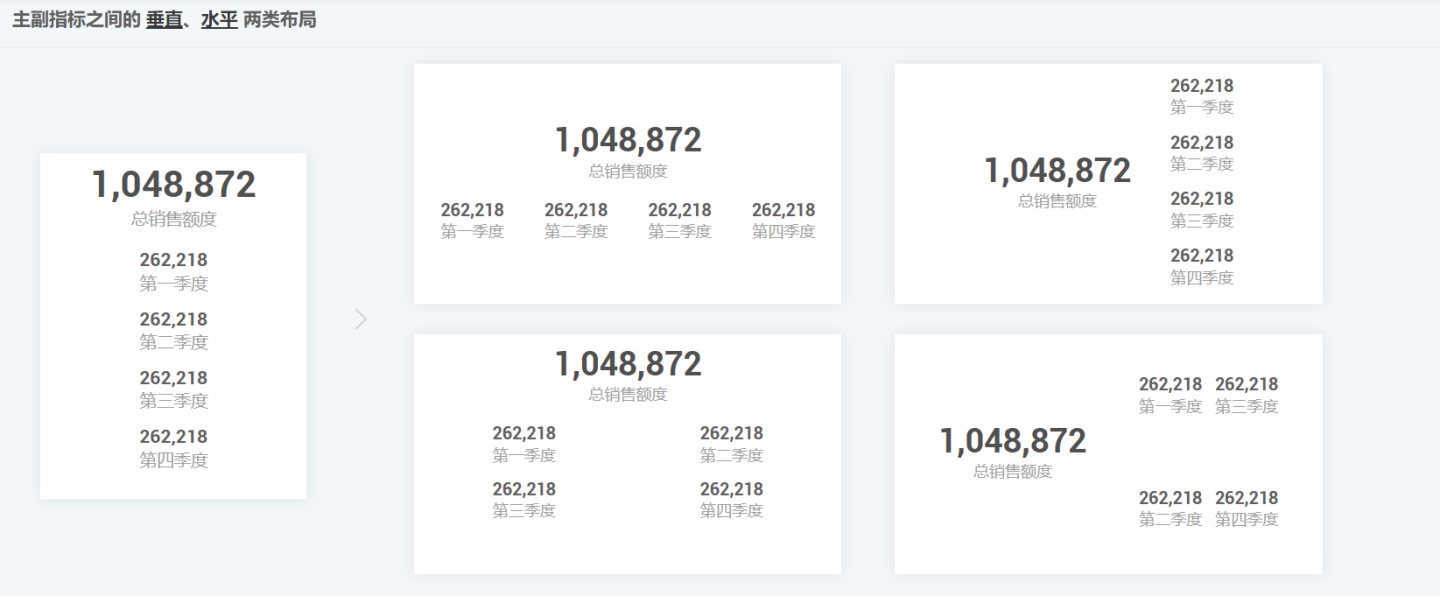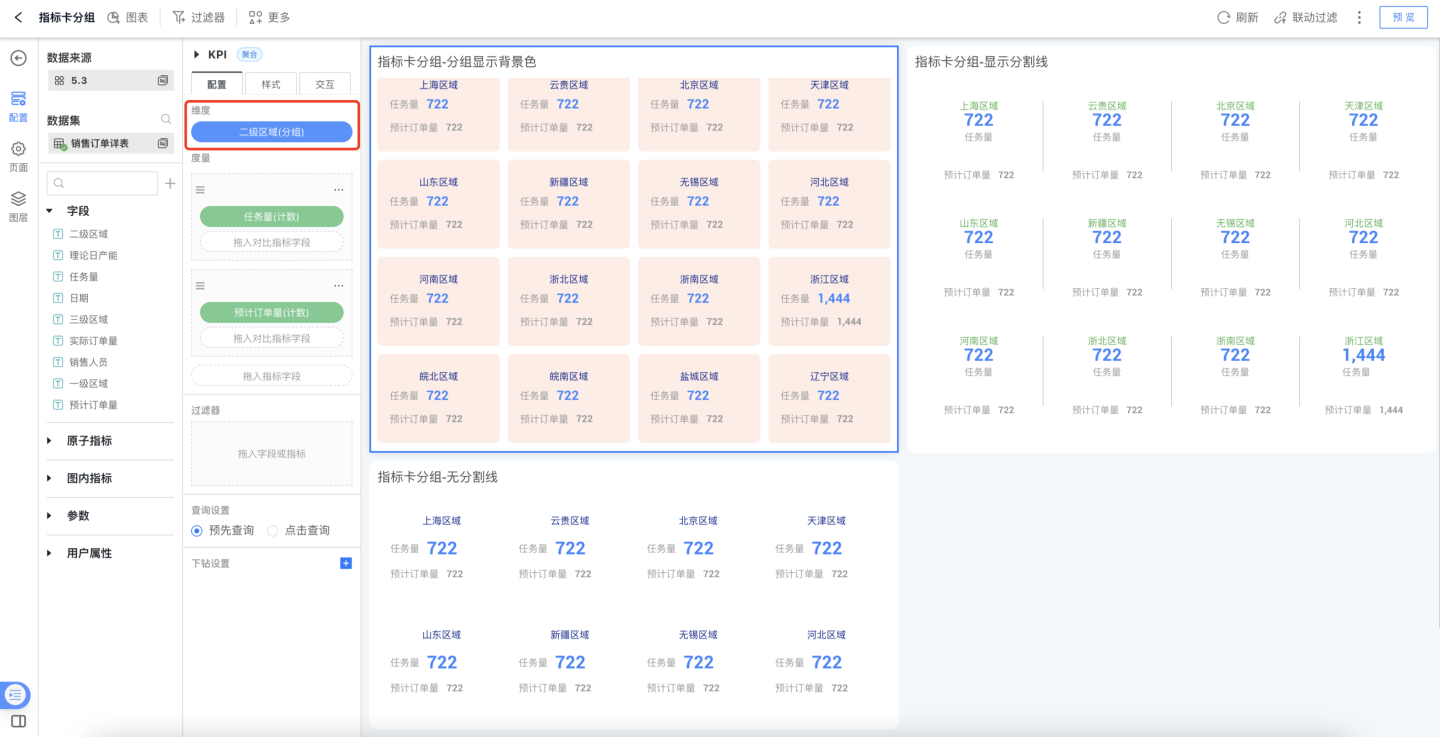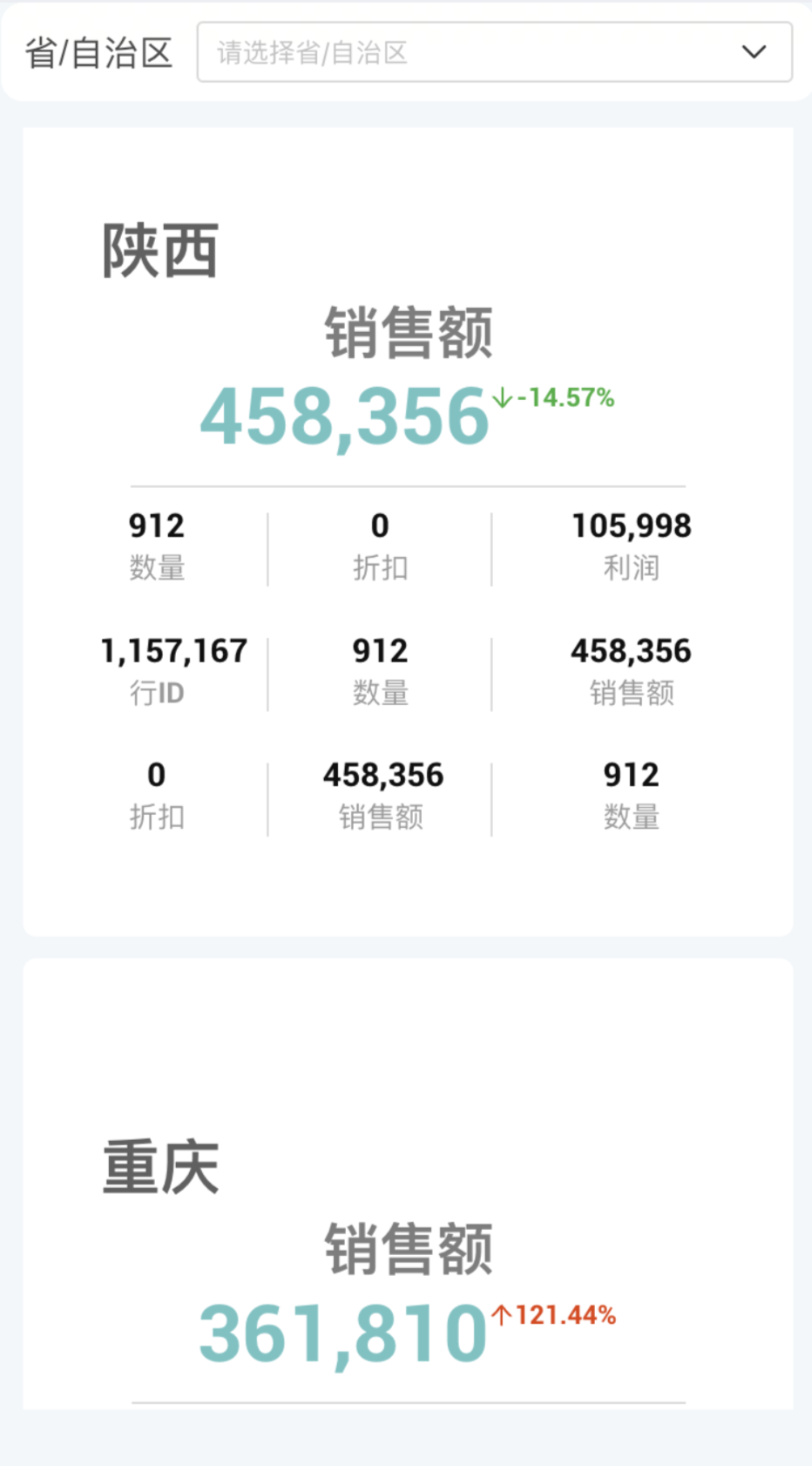KPI Chart
KPI stands for Key Performance Indicator, and the KPI chart visually presents the status of indicators, helping users quickly understand the current value and state of the indicators.
Below is an introduction on how to configure a KPI chart.
KPI Chart
Single-Metric KPI Chart
Click to create a new chart widget, select the data source and dataset, and choose KPI as the chart type.

Drag in the metric field "Total Sales" and the comparison metric field "Total Sales" to calculate the year-over-year and month-over-month changes in total sales.

Adjust the KPI style. Set the title, main metric style, and comparison metric style.

A simple KPI chart is completed, and single-metric charts can use vertical and horizontal layouts.

Multi-Metric KPI Chart
A multi-metric KPI chart contains multiple indicators within a single chart, where the first indicator is the main metric and the others are secondary metrics. The main and secondary metrics can be changed by adjusting the indicator order.
The creation process for a multi-metric KPI chart is the same as for a single-metric chart, except that a multi-metric KPI requires setting the overall layout, main metric style, and secondary metric style. Common multi-metric layout styles include the following:

KPI Chart Supports Dimension Grouping
In analysis scenarios, there is often a need to compare KPI indicators horizontally under a certain dimension, such as viewing indicators by city. To meet this requirement, we have enabled KPI charts to support dimension grouping, which can be achieved by simply adding a dimension field.
After grouping, the style of the grouped indicator blocks can be configured in KPI Chart > Style > Indicator Block Layout.


Metric Trend Card
The metric trend card allows users to view the total value of the metric while also displaying the time trend of the metric.

KPI Widget Interaction
KPI charts support interactive operations such as linkage filtering, drill-down, and jump with other controls. Please click here for detailed interaction settings.
Tip
After KPI supports dimension grouping, it supports linkage filtering operations with other charts by dimension.